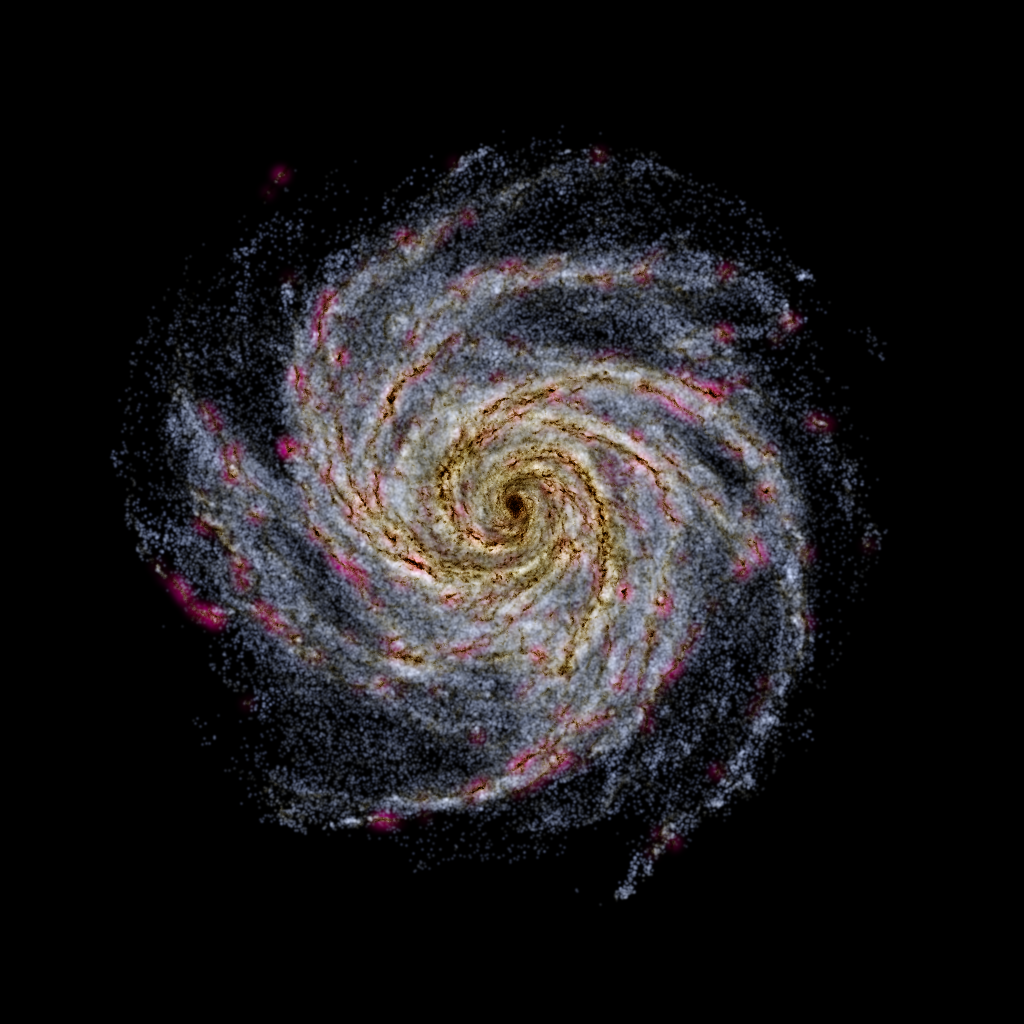Using pNbody in parallel¶
With pNbody, it is possible to run scripts in parallel, using the mpi libary.
You need to have of course mpi and mpi4py installed.
To check your installation, try:
mpirun -np 2 pNbody_mpi
you should get:
This is task 0 over 2
This is task 1 over 2
but if you get:
This is task 0 over 1
This is task 0 over 1
this means that something is not working correctly, and you should check your path or mpi and mpi4py installation
before reading further.
The prevous scripts scripts/slice.py can diretely be run in paralle.
This is simply obtained by calling the mpirun command:
mpirun -np 2 scripts/slice.py gadget_z*0.dat
In this simple script, only the processus of rank 0 (the master) open the file.
The content of the file (particles) is then distributed among all the other processors.
Eeach processor recives a fraction of the particles.
Then, the selection of gas gas particles and the slice are preformed by all processors on
their local particles.
Finally, the nb.write() command, run by the master, gather all particles and write the output file.
Parallel output¶
With pNbody, its possible to write files in parallel, i.e., each task write its own file.
We can do this in the previous script simply by adding the line nb.set_pio('yes'). This
tells pNbody to write files in parallel when nb.write() is called.
The content of the new scripts scripts/slice-p1.py is:
#!/usr/bin/env python
import sys
from pNbody import *
files = sys.argv[1:]
for file in files:
print "slicing",file
nb = Nbody(file,ftype='gadget')
nb = nb.select('gas')
nb = nb.selectc((fabs(nb.pos[:,1])<1000))
nb.rename(file+'.slice')
nb.set_pio='yes'
nb.write()
We can now run it:
mpirun -np 2 scripts/slice-p1.py gadget_z00.dat
This creates two new files:
gadget_z00.dat.slice.1
gadget_z00.dat.slice.0
The files have the same name than the initial name given in Nbody() with an extention .i where i
corresponds to the processus rank. Each file contains the particles attributed to the corresponding task.
Parallel input¶
Now, it possible to start by reading these two files in parallel instead of asking only the master to read one file::
In our script, we add the optional argument pio='yes' when creating the object with Nbody():
TODO: SOMETHING MISSING HERE???
Note also that we have used nb.set_pio('no') . This force at the end the file te be written only by the master.
#!/usr/bin/env python
import sys
from pNbody import *
files = sys.argv[1:]
for file in files:
print("slicing",file)
nb = Nbody(file,ftype='gadget',pio='yes')
nb = nb.select('gas')
nb = nb.selectc((fabs(nb.pos[:,1])<1000))
nb.rename(file+'.slice.new')
nb.set_pio('no')
nb.write()
When we launch it:
mpirun -np 2 scripts/slice-p2.py gadget_z00.dat.slice
the two files gadget_z00.dat.slice.0 and gadget_z00.dat.slice.1 are read
each by one task, processed but at the end only the master write the final output : gadget_z00.dat.slice.slice.new`.
More on parallelisme¶
Lets try two other scripts. The first one (findmax.py) try to find the radial maximum distance among
all particles and the center. It illustrate the difference between using max()
wich gives the local maximum (maximum among particles of the node) and mpi.mpi_max()
which gives the global maximum among all particles:
#!/usr/bin/env python
import sys
from pNbody import *
file = sys.argv[1]
nb = Nbody(file,ftype='gadget',pio='yes')
local_max = max(nb.rxyz())
global_max = mpi.mpi_max(nb.rxyz())
print("proc %d local_max = %f global_max = %f"%(mpi.ThisTask,local_max,global_max))
When running it, you should get:
mpirun -np 2 ./scripts/findmax.py gadget_z00.dat.slice
proc 1 local_max = 8109.682129 global_max = 8109.682129
proc 0 local_max = 7733.846680 global_max = 8109.682129
which illustrate clearly the point. Finally, the latter script shows that even graphical
functions support parallelisme. The script showmap.py illustrate this point by computing
a map of the model:
#!/usr/bin/env python
import sys
from pNbody import *
file = sys.argv[1]
nb = Nbody(file,ftype='gadget',pio='yes')
nb.display(size=(10000,10000),shape=(256,256),palette='light')
When running
mpirun -np 2 ./scripts/showmap.py gadget_z00.dat.slice
you get an image of the model. The mapping has been performed independently by two processors.
